
Publications of the Burndy Library shares this publication information:
Nearly every empire worthy of the name—from ancient Rome to the United States—has sought an Egyptian obelisk to place in the center of a ceremonial space. Obelisks—giant standing stones, invented in Ancient Egypt as sacred objects—serve no practical purpose. For much of their history their inscriptions, in Egyptian hieroglyphics, were completely inscrutable. Yet over the centuries dozens of obelisks have made the voyage from Egypt to Rome, Constantinople, and Florence; to Paris, London, and New York. New obelisks and even obelisk-shaped buildings rose as well—the Washington Monument being a noted example. Obelisks, everyone seems to sense, connote some very special sort of power. This beautifully illustrated book traces the fate and many meanings of obelisks across nearly forty centuries—what they meant to the Egyptians, and how other cultures have borrowed, interpreted, understood, and misunderstood them through the years.
In each culture obelisks have taken on new meanings and associations. To the Egyptians, the obelisk was the symbol of a pharaoh’s right to rule and connection to the divine. In ancient Rome, obelisks were the embodiment of Rome's coming of age as an empire. To nineteenth-century New Yorkers, the obelisk in Central Park stood for their country’s rejection of the trappings of empire just as it was itself beginning to acquire imperial power. And to a twentieth-century reader of Freud, the obelisk had anatomical and psychological connotations.
The history of obelisks is a story of technical achievement, imperial conquest, Christian piety and triumphalism, egotism, scholarly brilliance, political hubris, bigoted nationalism, democratic self-assurance, Modernist austerity, and Hollywood kitsch—in short, the story of Western civilization.
While not thoroughly and intensely reading Obelisk: A History yet, cover to cover, I have studied each illustration and caption deeply. Then I read multiple parts of the tome, scanned the entire book, while recovering from some apparently kidney stone-related ailments over the weekend. (My empathy to any ancient Egyptians going through that misery as they built these beautiful obelisks.)
In general, I found Obelisk: A History is a grand overview that I must recommend. It is art-oriented, technical, and shares many intriguing details on the known cultural history of obelisks through 295 pages of text, 38 pages of notes, 25 pages of bibliography, five pages of illustration captions for the archival black and white images, and nine pages of an excellent index.
My favorite supporting appendix is the section entitled "The Wandering Obelisks: A Cheat Sheet." This supplementary material tracks the creation and journey a few well-known obelisks have taken to their current locations.
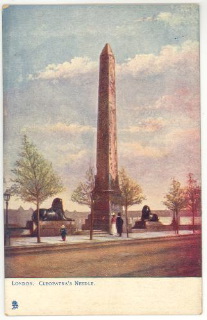
Cleopatra's Needle, London, United Kingdom.
For example, here is one sample entry of the obelisk I was able to view while over in London to appear on the Paul O'Grady Show.
∆∆∆∆∆∆∆∆∆∆∆∆∆∆∆∆∆∆∆∆∆∆∆∆∆∆
LONDON, THAMES EMBANKMENT
• Inscribed for Pharoah Thutmose III (1479-1425 BCE) and raised at Heliopolis
• Moved to Alexandria by Emperor Augustus between 23 and 12 BCE; erected in front of the Caesarium
• Moved to London in 1877-78; erected on the Thames Embankment
• Usually called Cleopatra's Needle
• Pair to the New York obelisk
∆∆∆∆∆∆∆∆∆∆∆∆∆∆∆∆∆∆∆∆∆∆∆∆∆∆
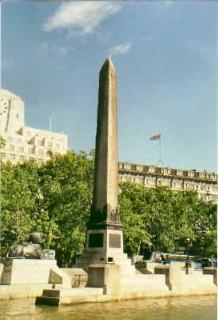
The authors record the travels of 19 obelisks in this interestingly constructed list.
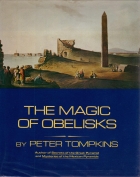
While Obelisk: A History is not as reader friendly and exploratory as Peter Tompkins' book, The Magic of Obelisks, there is much about it that thoughtful researchers, students, and obelisk-obsessed fans will enjoy.
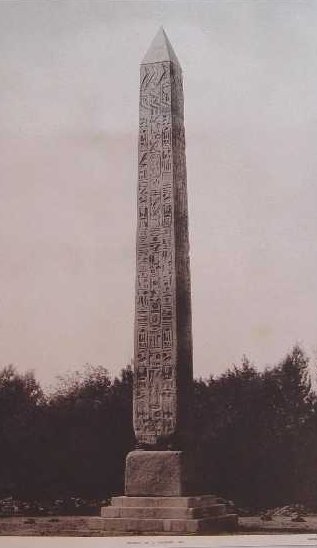
A synchromystic footnote: In Obelisk: A History, Freemasonry is treated somewhat dismissively, and only mentioned on two pages, regarding the gathering of many Masons at the dedication of the New York obelisk (shown above). This is more evidence that this book, in essence, is more a mainstream cultural art history tome than a collection of anomalistic factoids. Also, this means too, that this book avoids touching on the hidden history of how much overlap there has been in recent years between the proper preservation of Egyptian obelisks and Masonic funding.
Nevertheless, Obelisks: A History is a worthy addition to any obelisk resource and research library, of course.
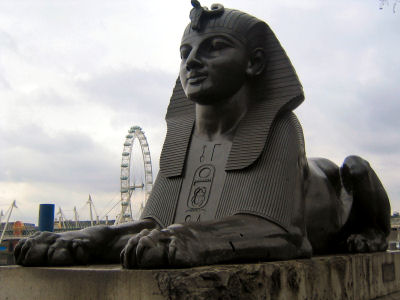
No comments:
Post a Comment